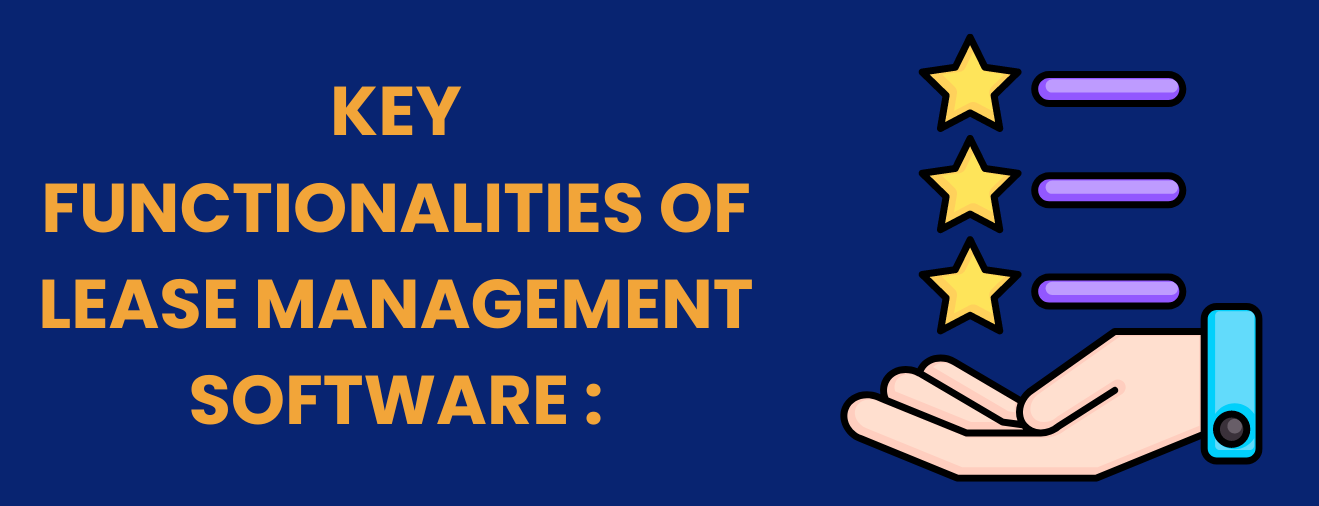Lease management software is indispensable for efficiently handling lease agreements, ensuring compliance, and optimizing operational workflows for property managers and real estate professionals. This guide offers a detailed exploration of the key factors to consider when selecting lease management software tailored to meet your organization’s specific needs and objectives.
Understanding Lease Management Software
Lease management software serves as a centralized platform designed to streamline and automate various lease-related processes throughout their lifecycle. These processes typically encompass lease tracking, financial management, document management, compliance monitoring, and reporting. By consolidating these functionalities into a unified system, lease management software empowers property managers to effectively manage lease agreements, monitor critical dates and obligations, track rental payments, and maintain compliance with regulatory standards.

Key Functionalities of Lease Management Software:
- Lease Tracking: Maintain a centralized repository of lease agreements with detailed information such as lease terms, conditions, clauses (e.g., renewal options, rent escalation clauses), and critical dates (e.g., lease commencement, expiration, renewal dates).
- Financial Management: Automate rent calculations, manage rent escalations, handle invoicing and payment processing, generate financial reports (e.g., rent roll, cash flow analysis), and integrate seamlessly with accounting systems for accurate financial management and reporting.
- Document Management: Store and manage lease-related documents securely, facilitate document version control, ensure easy access to critical documents (e.g., lease agreements, amendments, certificates of insurance), and support document sharing and collaboration among stakeholders.
- Compliance and Regulations: Monitor lease compliance with regulatory requirements (e.g., lease accounting standards such as ASC 842 and IFRS 16), track lease-related expenses and obligations, generate compliance reports, and ensure adherence to legal and financial regulations to mitigate risks associated with non-compliance.
Key Features to Look For
When evaluating lease management software solutions, prioritize features that align with your organization’s operational requirements, scalability, and growth objectives. Consider the following key features to ensure the software meets your specific needs effectively:
- Customization: Ability to customize workflows, templates, and reports to accommodate your organization’s unique lease management processes, terminology, and reporting requirements.
- Integration Capabilities: Seamless integration with existing enterprise systems (e.g., ERP, accounting software, property management software) to facilitate data synchronization, streamline operations, and enhance overall efficiency.
- Scalability: Scalable software architecture that can accommodate your organization’s growth, expansion of property portfolios, and increasing lease volumes without compromising performance or functionality.
- Reporting and Analytics: Robust reporting capabilities to generate customizable reports (e.g., lease abstracts, lease expiration reports, financial statements), leverage advanced analytics tools to gain insights into lease performance, portfolio metrics, and financial trends, and support data-driven decision-making.
- Automation: Automation of routine lease management tasks (e.g., lease renewal notifications, rent adjustments, CAM reconciliations) to improve operational efficiency, reduce manual errors, and enhance productivity across lease administration processes.
- Tenant Portal: Provision of a tenant-facing portal or self-service portal that allows tenants to access lease-related information, submit maintenance requests, make rent payments securely, and communicate with property managers efficiently.
Evaluating Software Providers
Choosing the right lease management software provider is crucial to the success of your software implementation and ongoing support. Consider the following factors when evaluating software providers:
- Vendor Reputation: Research the vendor’s reputation, industry experience, customer testimonials, and case studies to assess their track record and credibility in delivering effective lease management solutions tailored to your industry and organizational needs.
- Customer Support: Evaluate the vendor’s customer support services, including availability, responsiveness, support channels (e.g., phone, email, live chat), and service level agreements (SLAs) to ensure timely resolution of issues, ongoing support, and customer satisfaction.
- Implementation Process: Assess the vendor’s implementation methodology, project management approach, and timeline for deployment to minimize disruption to your organization’s operations, ensure a smooth transition from legacy systems or manual processes, and optimize software utilization.
- Security Measures: Verify the vendor’s data security protocols, encryption standards, compliance with data protection regulations (e.g., GDPR, CCPA), and measures to safeguard sensitive lease information against unauthorized access, breaches, or cybersecurity threats.

Implementation and Training
Successfully implementing lease management software involves strategic planning, comprehensive training, and effective change management to maximize user adoption and operational efficiency:
Implementation Steps:
- Data Migration: Ensure accurate and secure transfer of existing lease data from legacy systems or spreadsheets into the new lease management software, maintaining data integrity and continuity to support informed decision-making and compliance requirements.
- Training and Onboarding: Provide tailored training sessions, user manuals, online tutorials, and webinars to educate users on software functionalities, best practices for lease administration, and effective utilization of features to optimize productivity and minimize learning curves.
- Testing and Feedback: Conduct thorough testing of the software’s functionality, workflows, and integrations to identify and resolve any issues or discrepancies before full deployment. Gather feedback from users throughout the testing phase to address usability concerns, refine processes, and ensure alignment with operational workflows.
- Post-Implementation Support: Establish ongoing support from the vendor, including assistance with software updates, troubleshooting technical issues, addressing user inquiries, and providing continuous training opportunities to enhance user proficiency and maximize the software’s value over time.
Cost Considerations
Cost plays a significant role in selecting lease management software and should be evaluated based on factors such as functionality, scalability, implementation requirements, and ongoing support:
- Upfront Costs: Initial investment in software licenses, implementation services, customization, and configuration based on your organization’s size, scope of operations, and specific lease management needs.
- Subscription Fees: Recurring subscription fees or licensing costs, which may vary depending on the software vendor’s pricing model (e.g., per user, per property unit, tiered pricing structure), and consider potential discounts for long-term commitments or bundled services.
- Additional Costs: Budget for additional expenses such as training programs, ongoing support and maintenance fees, software updates, customization or integration fees for specific business requirements, and potential costs associated with scaling the software as your organization grows.
Selecting the right lease management software requires careful consideration of your organization’s unique needs, operational requirements, regulatory compliance, and strategic objectives for growth and efficiency. By prioritizing essential features such as customization, integration capabilities, scalability, automation, and robust security measures, you can choose a lease management software solution that aligns with your business goals and enhances overall operational effectiveness in managing leases and optimizing property management workflows.
Investing in a comprehensive lease management software solution not only streamlines lease administration processes but also enhances transparency, improves decision-making capabilities, and mitigates risks associated with regulatory compliance and financial management. By leveraging the insights and guidelines provided in this comprehensive guide, you can make informed decisions, successfully implement a lease management software solution, and achieve long-term success in managing your property portfolios effectively.


